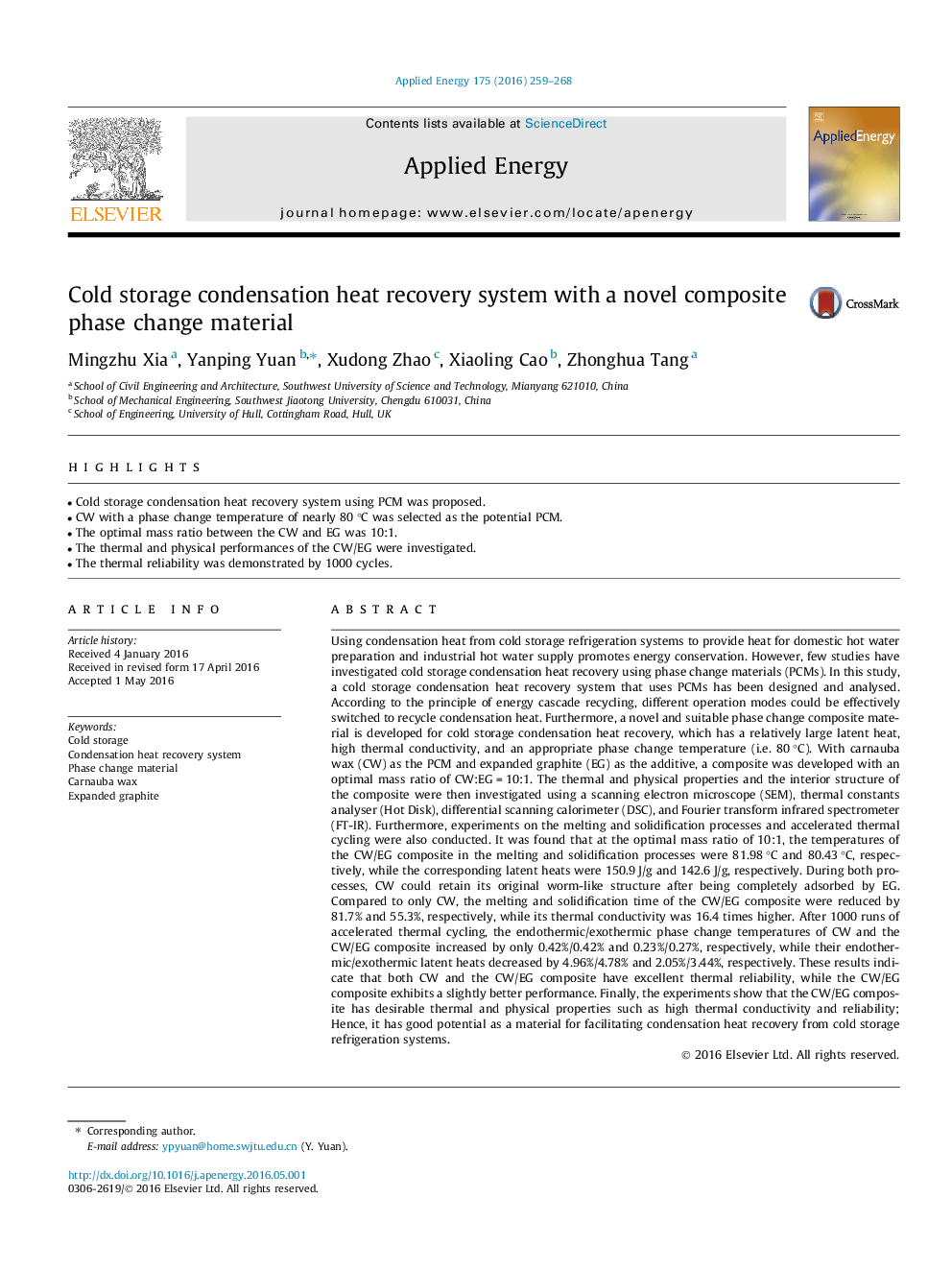| کد مقاله | کد نشریه | سال انتشار | مقاله انگلیسی | نسخه تمام متن |
|---|---|---|---|---|
| 6682979 | 501849 | 2016 | 10 صفحه PDF | دانلود رایگان |
عنوان انگلیسی مقاله ISI
Cold storage condensation heat recovery system with a novel composite phase change material
ترجمه فارسی عنوان
سیستم گرمادهی تراکم سرد شدن با یک ماده جدید تغییر فاز کامپوزیت
دانلود مقاله + سفارش ترجمه
دانلود مقاله ISI انگلیسی
رایگان برای ایرانیان
کلمات کلیدی
ذخیره سازی سرد سیستم بازیابی حرارت گرم کننده، مواد تغییر فاز موم کارناوب، گرافیت گسترش یافته،
موضوعات مرتبط
مهندسی و علوم پایه
مهندسی انرژی
مهندسی انرژی و فناوری های برق
چکیده انگلیسی
Using condensation heat from cold storage refrigeration systems to provide heat for domestic hot water preparation and industrial hot water supply promotes energy conservation. However, few studies have investigated cold storage condensation heat recovery using phase change materials (PCMs). In this study, a cold storage condensation heat recovery system that uses PCMs has been designed and analysed. According to the principle of energy cascade recycling, different operation modes could be effectively switched to recycle condensation heat. Furthermore, a novel and suitable phase change composite material is developed for cold storage condensation heat recovery, which has a relatively large latent heat, high thermal conductivity, and an appropriate phase change temperature (i.e. 80 °C). With carnauba wax (CW) as the PCM and expanded graphite (EG) as the additive, a composite was developed with an optimal mass ratio of CW:EG = 10:1. The thermal and physical properties and the interior structure of the composite were then investigated using a scanning electron microscope (SEM), thermal constants analyser (Hot Disk), differential scanning calorimeter (DSC), and Fourier transform infrared spectrometer (FT-IR). Furthermore, experiments on the melting and solidification processes and accelerated thermal cycling were also conducted. It was found that at the optimal mass ratio of 10:1, the temperatures of the CW/EG composite in the melting and solidification processes were 81.98 °C and 80.43 °C, respectively, while the corresponding latent heats were 150.9 J/g and 142.6 J/g, respectively. During both processes, CW could retain its original worm-like structure after being completely adsorbed by EG. Compared to only CW, the melting and solidification time of the CW/EG composite were reduced by 81.7% and 55.3%, respectively, while its thermal conductivity was 16.4 times higher. After 1000 runs of accelerated thermal cycling, the endothermic/exothermic phase change temperatures of CW and the CW/EG composite increased by only 0.42%/0.42% and 0.23%/0.27%, respectively, while their endothermic/exothermic latent heats decreased by 4.96%/4.78% and 2.05%/3.44%, respectively. These results indicate that both CW and the CW/EG composite have excellent thermal reliability, while the CW/EG composite exhibits a slightly better performance. Finally, the experiments show that the CW/EG composite has desirable thermal and physical properties such as high thermal conductivity and reliability; Hence, it has good potential as a material for facilitating condensation heat recovery from cold storage refrigeration systems.
ناشر
Database: Elsevier - ScienceDirect (ساینس دایرکت)
Journal: Applied Energy - Volume 175, 1 August 2016, Pages 259-268
Journal: Applied Energy - Volume 175, 1 August 2016, Pages 259-268
نویسندگان
Mingzhu Xia, Yanping Yuan, Xudong Zhao, Xiaoling Cao, Zhonghua Tang,
